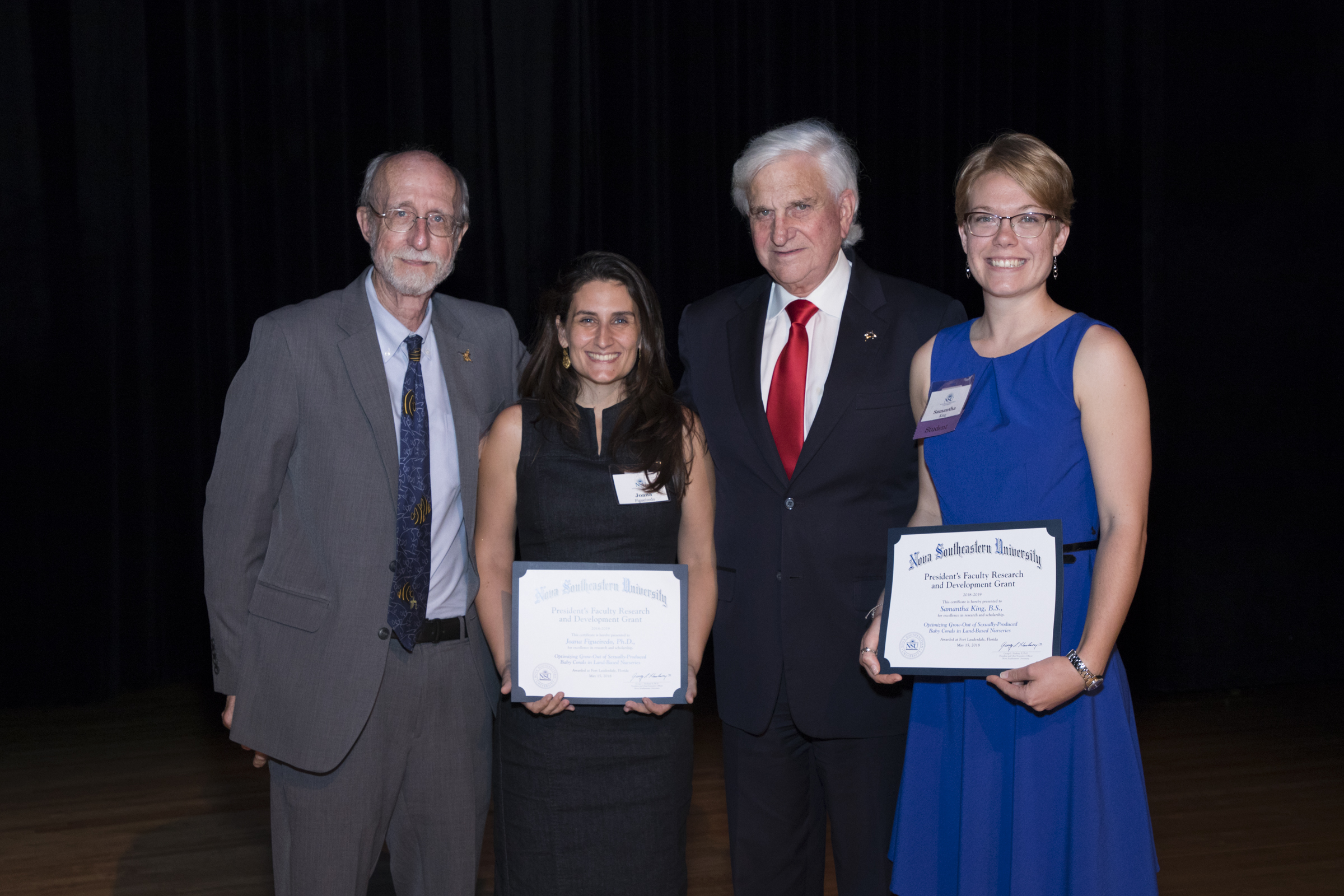Optimizing grow-out of sexually-produced baby corals in land-based nurseries
Grant Winners
- Joana Figueiredo, Ph.D. – Halmos College of Oceanography and Natural Sciences
- David Gilliam, Ph.D. – Halmos College of Oceanography and Natural Sciences
- Samantha King, BS – Halmos College of Oceanography and Natural Sciences
- Jena Robbins, BS – Halmos College of Oceanography and Natural Sciences
Dean
- Richard Dodge, Ph.D. – Halmos College of Oceanography and Natural Sciences
Abstract

Despite the economic importance of corals reefs, these ecosystems have been declining worldwide due to local and global anthropogenic stressors such as pollution, overfishing and climate change. One tool managers can use to accelerate the recovery of coral reefs is restoration, i.e. transplanting corals cultured in land-based or offshore nurseries on the reef. Currently, corals are cultured through fragmentation, i.e., cutting a piece of a wild coral and then growing it in nurseries. The problem is that this asexual form of reproduction only replicates existing genotypes, and thus cannot contribute to increase genetic diversity, which would be essential for corals to adapt to new environmental conditions. To increase genetic diversity, the future of coral restoration needs to include sexual reproduction. At the moment, one of the greatest constrains for culturing sexually-produced corals is that baby corals experience very high mortality right after larval settlement. Specifically, they are vulnerable to high light irradiance and, due to their small size (~500μm), are often overgrown by macroalgae. However, mortality rates decrease considerably as the corals grow, thus it is extremely important for land-based nurseries to determine the ideal size to outplant these sexually-produced corals on the reef.
Here we propose to optimize the grow-out culture of sexually-produced baby corals of the endangered species Acropora cervicornis by testing the effect of three techniques that aim to control algal overgrowth and light exposure on their survival and growth: coarse sediment, shading and tile orientation. Additionally, we will determine the ideal time/coral age to outplant sexually-produced corals, i.e. the size after which mortality after outplant is considerably reduced. The optimization of techniques to grow sexually-produced corals in land-based nurseries will be essential to improve the efficacy of restoration efforts, and thus hasten the recovery of the population of the staghorn corals in Florida and Caribbean.